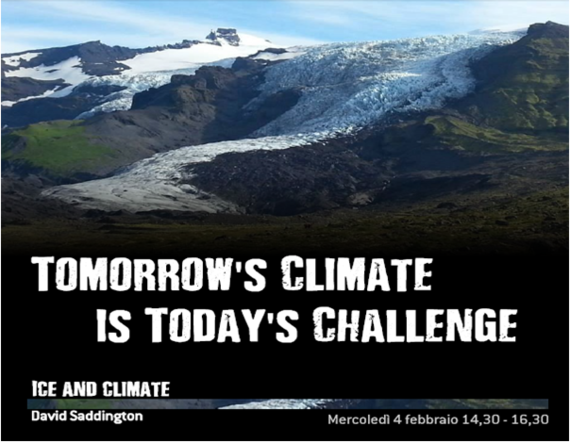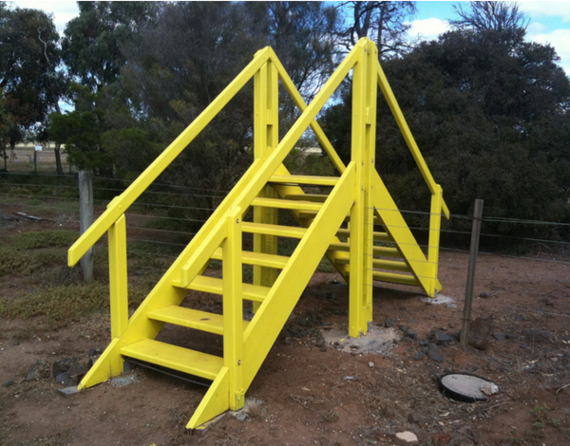Lessons in communicating science from my Italian Climate Tour
I've just returned from a week-long lecture circuit in the beautiful Trentino region, Northern Italy, where I talked to students, professors and museum curators about the challenges of climate change and my academic research on Icelandic glaciers.
As other public speakers, lecturers and science enthusiasts will know it's always a pleasure to speak to new audiences and spread your passion for a subject in order to motivate people to take an interest.
In my now 10 years of experience presenting to large audiences I have found that nothing refines your communication skills more than pitching some pretty difficult concepts to students who have English as a second language, albeit very good English.
Now my Italian is well within the bounds of the holiday-linguist category of "molto buona" and "grazie", so trying to come up with phrases that didn't feature in my basic Macro Polo Guide such as 'rapid glacier retreat' wasn't really an option. Naturally my presentations had to be in English.
Despite talking in English I was reminded of some important lessons when it comes to presenting throughout the course of the week.
Clarity of Communication
The Golden Rule of public speaking.
If you can't talk about it simply, it probably means that you don't understand it well enough.
Communicating ideas simply, BUT not simplistically is the key to presentation success. But this really isn't as easy as it sounds.
This rule is the presentation equivalent of that teacher in school reminding you time and time again during exam prep to "read the question", and in the spur of the moment during your finals you end up answering the question you thought the paper asked, Doh!
It's far too easy to get caught up within a subject you know so well and bamboozle your audience who is hearing all the new juicy information for the very first time.
This message of clarity is particularly pertinent when communicating complex scientific concepts like my lecturing. I adjusted my style several times over the week, trying to constantly shift and adapt to what the audience best responded to.
It's very much a game of trial and error and finding out what level to pitch your talk at to get maximum engagement. Go too low and its patronizing, too high and no one has a clue what you are talking about.
When you get it right, you'll know and your audience will nod along and scribble down notes rather than gazing out of the window or snapchatting their bored faces..
Metaphorical Language
The second message in communicating complex ideas that I found extremely useful is to use metaphorical language.
Communicating complex concepts without metaphors is like trying to build a house without the foundations. Metaphors really are the strong columns which support your ideas, metaphors are the oak timbers which.. ok now that's enough.
But seriously try and make these examples relevant to everyday experiences and to something which your audience might have experienced or can easily imagine.
Explaining glacier flow to a packed conference in Rovereto to a broad audience.. cue metaphorical example, imagine sticky honey running slowly down a slope on a cold day due to gravity, the ice moves very much like this and the movement of ice downhill under its own weight is actually called plastic deformation.
This also keeps it interesting as relentless science presentations can be dull. Scaling things up and talking about why what you are talking about is relevant to everyday life is also a good tactic..or including some good but relevant photos (ie: no cats) to bring attention back when things are getting a bit dull.
Like this picture of this this mountain hut, 2700m into the snowy Dolomites where I gave one of my presentations. Wow!
Sloooooow Down
Talking slowly and clearly is a point which people tend to consciously amplify when talking to an audience who have English as a second language. Now this is a trait which should not be side-lined when talking to native speakers.
Making fewer points but making them clear always wins out over rambling through as many points as you can.
Talking slower, varying your tone, inviting pauses into your talk can help you engage with your audience but far too many presenters get caught up in the excitement or nerves of the event and rattle through their script.
Keep It Simple- Always
My exciting week touring through the stunning towns and country of Trentino, the Dolomites and Venice reinforced these lessons in presenting and honed my skills in communicating scientific research.
Now these lessons don't just apply to conference style presentations or lectures, all mediums of knowledge communication need to be effective.
On my return to the UK I plunged straight back into my academic research and was actually annoyed by some of the poor presentation styles and language used in academic papers.
After a few years within academia ,or equally within a niche business sector, you become accustomed to certain types of language so it takes a fresher perspective to notice some of these presentation faux-pas.
A large proportion of academic papers are inaccessible to anyone who isn't a specialist and the language and structure used is far from clear and borderline ostentatious and pretentious.
Complicated language is used seemingly for the sake of being complicated, when instead the authors should be trying to make their argument as clear as possible. Academic papers should not read like an entry into the National Poetry Competition where flowery language and thesaurus over-kill might get you extra points, when its science it should be presented in a crisp, clear and concise way.
This is a particular problem in the world of climate science when an 'Over-The-Fence' ethic of communication is displayed. Science is produced and metaphorically thrown over the fence to the end-user to act upon, whether that be politician, business, community group or charity. There is little tailoring of information to suit any audience other than hard core academics.
There needs to be a step ladder which crosses the great divide between science and end-user to explain the science in simple terms and how it affects them.
This is the role of scientific communicators who can unpick the information, draw out the key points and tailor the communication to suit the audience to ultimately make the information accessible and interesting.
But in the long-term academics need to start making concessions and communicate science with clarity, especially for topics which have profound impacts upon society such as climate change.
Science is useful. Science is interesting. Do Science justice and communicate it in a useful way.




